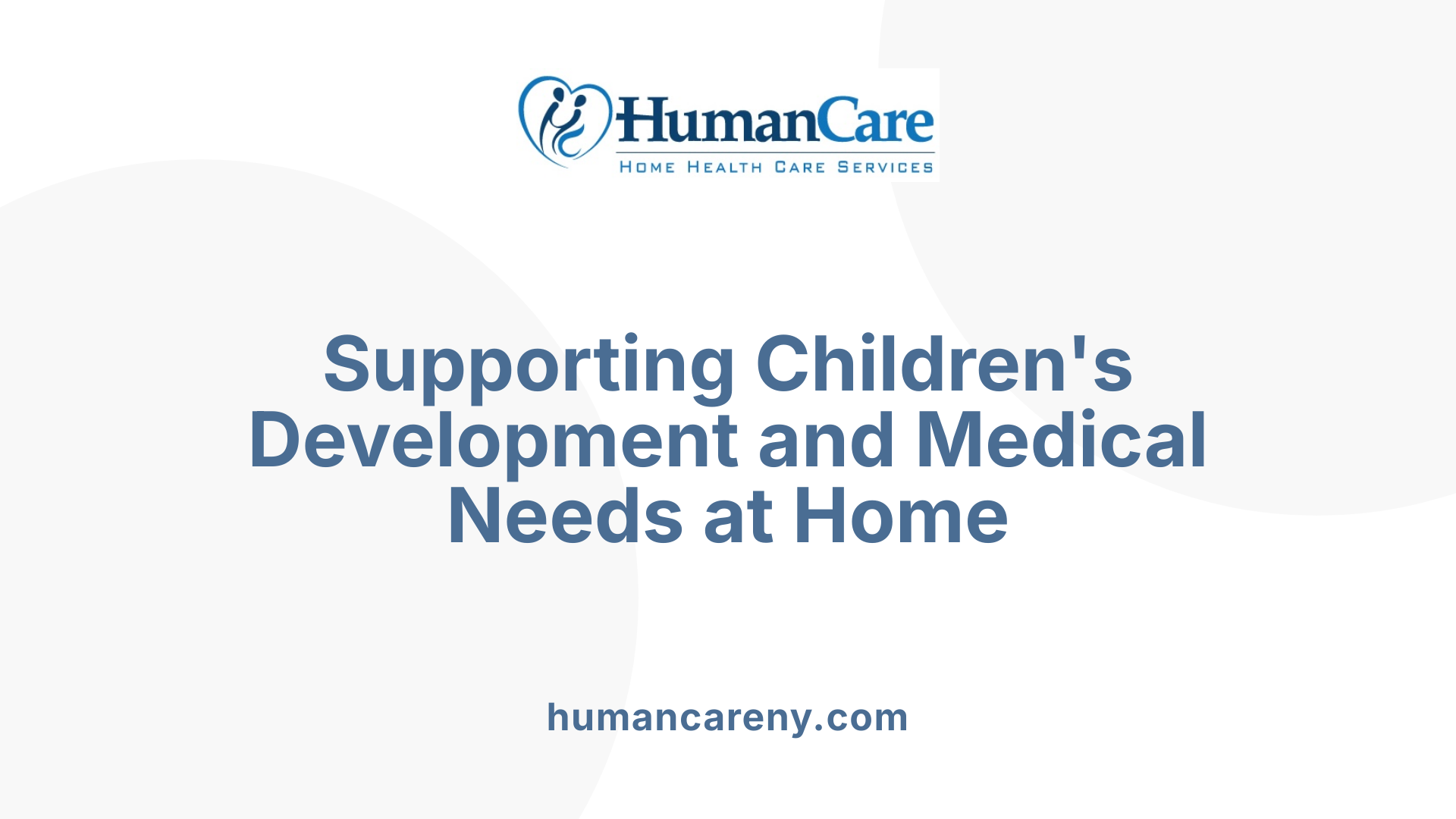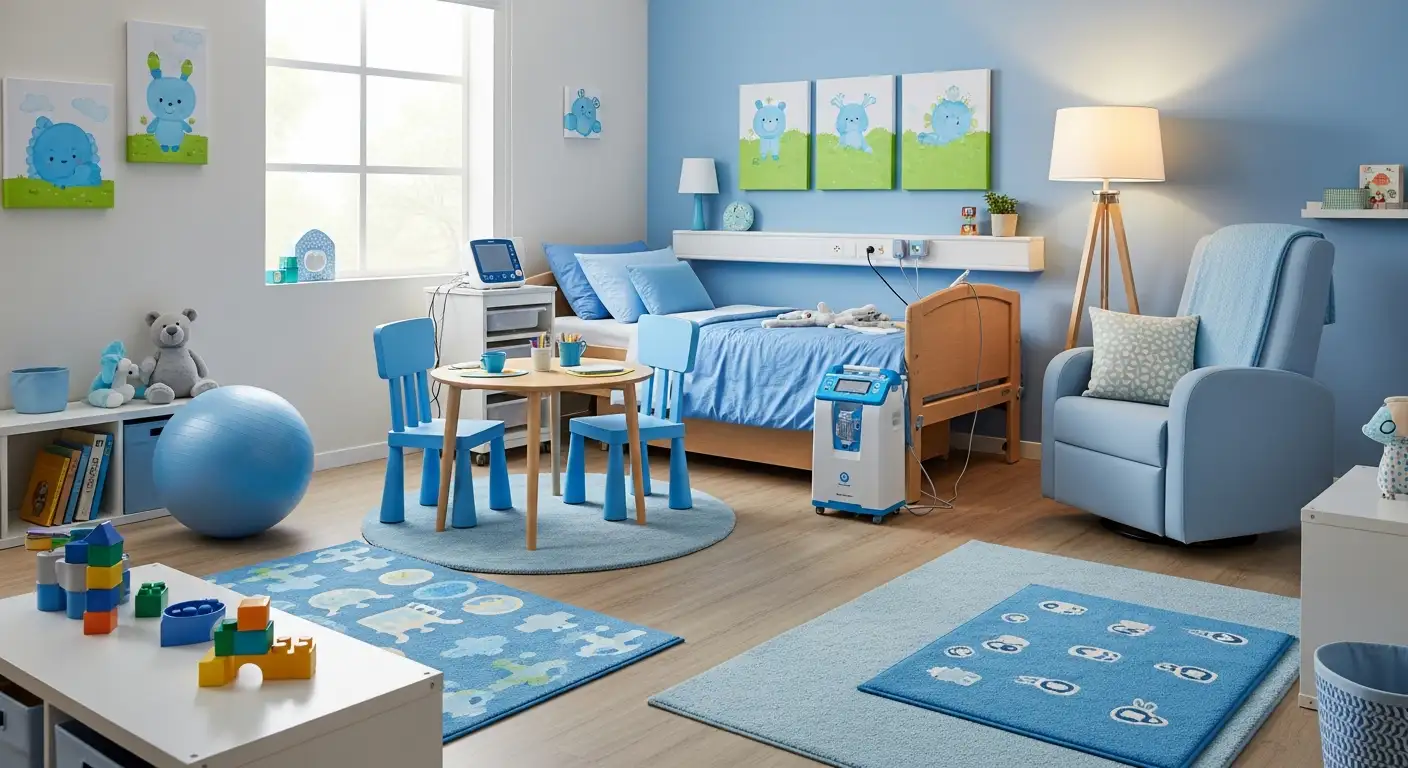How pediatric home care aids children with chronic illnesses
Supporting Children with Chronic Illnesses at Home

Understanding Pediatric Home Care
Pediatric home care represents a specialized healthcare approach that offers medical and supportive services directly in the child's home environment. This model has grown increasingly vital for children managing long-term and complex health conditions, providing a range of tailored services aimed at improving health outcomes, fostering emotional well-being, and supporting family participation. Unlike traditional hospital-based care, pediatric home care emphasizes personalized, family-centered treatment plans that adapt over time to meet each child's unique needs.
Comprehensive Services in Pediatric Home Care

What types of services are provided by pediatric home care for children with medical needs?
Pediatric home care offers a diverse range of services tailored specifically to children with varying medical conditions. These include essential nursing evaluations and medication administration to ensure proper treatment and safety. Therapy services such as physical, occupational, and speech therapy are incorporated to support developmental progress, enhance mobility, and improve communication skills. The management of medical equipment, including ventilators, feeding tubes, and monitors, is vital for children with complex needs, often coupled with infusion therapy for administering medications or nutrients directly into the bloodstream.
Beyond routine care, specialized treatments include neonatal care for premature infants, asthma management, and recovery support for children post-surgery or trauma. A multidisciplinary team consisting of registered nurses, therapists, social workers, and family educators collaborates closely to create and execute personalized care plans. These plans address each child's unique health requirements and are adjusted over time as the child's condition evolves. The services aim not only to manage medical symptoms but also to promote recovery, reduce hospital visits, and provide emotional support, helping children thrive within their home environment.
Integrating Policy and Research for Better Outcomes

What does current research say about pediatric home health services?
Recent studies indicate that pediatric home health services can lead to notable improvements in health outcomes for children with complex or chronic conditions. Families report enhanced quality of life, with fewer hospital visits and faster recovery times. However, much of the existing evidence comes from observational data, highlighting the need for higher-quality research to firmly establish cost-effectiveness and long-term benefits.
Research also identifies several challenges. Workforce shortages and reimbursement issues limit the availability of trained providers. Access disparities persist, especially among minority and low-income populations. Family caregivers often face stress and health risks due to inadequate training and support. Despite these hurdles, experts advocate for more rigorous studies, policy reforms, and integrated care models to maximize the potential of pediatric home health services.
How can policies improve access to pediatric home care?
Policy initiatives are crucial for expanding access to pediatric home health care. Governments can support this by creating legal frameworks that ensure equitable reimbursement from insurance providers and Medicaid. Such policies can also fund workforce development programs aimed at increasing the number of trained pediatric care professionals.
Additionally, expanding telehealth services can overcome geographic barriers, especially in rural areas. Promoting care coordination through standardized protocols and data sharing enhances safety and consistency. Addressing regional disparities by allocating targeted funding and resources helps ensure children in underserved communities receive necessary services.
Through these strategies, policymakers can reduce financial and logistical barriers, making high-quality pediatric home care accessible to all children who need it.
Why is research essential for advancing pediatric home health care?
High-quality research underpins continuous improvements in pediatric home health care. It provides the evidence needed to validate care models, optimize interventions, and inform policy decisions. Well-designed studies can identify best practices, improve safety protocols, and assess cost-efficiency, thus guiding resource allocation.
Furthermore, research sheds light on disparities in care access and outcomes across different populations. This knowledge enables targeted strategies to address inequities. It also supports the development of standardized quality metrics, fostering consistency and accountability.
Without ongoing research efforts, efforts to evolve and expand pediatric home health services risk being ineffective or unsustainable. Therefore, fostering research capacity, encouraging multi-institutional collaborations, and standardizing data collection are crucial for evidence-based advancements.
How does care coordination across multiple providers improve outcomes?
Effective care coordination among health, therapy, and social services ensures that children receive seamless, comprehensive care. When providers share information and work collaboratively, it reduces redundant tests and treatments, prevents communication errors, and enables timely adjustments to care plans.
Care coordination also enhances family engagement by involving caregivers in decision-making and education, leading to better adherence and management of the child's needs. It can lower hospital readmission rates by proactively managing health issues and facilitating preventive care.
Technological tools like shared electronic health records further strengthen coordination efforts, making essential information accessible to all team members. Overall, integrated care models improve health, developmental, and emotional outcomes for children while reducing stress and burden on families.
How can efforts address disparities in access to pediatric care?
Achieving equitable access requires targeted policies and programs that focus on vulnerable populations. Expanding Medicaid and public insurance coverage helps reduce financial barriers for low-income families.
Investing in workforce training in underserved and rural areas increases the availability of trained providers. Culturally and linguistically appropriate resources and services help bridge communication gaps and build trust with diverse communities.
Telehealth initiatives play a vital role in overcoming geographical barriers, connecting children in remote locations with specialized providers. Community outreach and early intervention programs raise awareness and help identify needs early, reducing long-term disparities.
Finally, dedicated funding and policy support can ensure that disparities are systematically addressed, leading to more equitable access and improved health outcomes for all children.
| Aspect | Strategies | Impact |
|---|---|---|
| Policy Support | Legal frameworks, insurance reforms | Increased coverage, reduced financial barriers |
| Workforce | Training, incentives, telehealth | Improved provider availability, outreach |
| Technology | Telehealth, data sharing systems | Enhanced access, safety |
| Community Engagement | Outreach, early intervention | Reduced disparities, early detection |
Through these integrated efforts, pediatric home health care can become more accessible and equitable, improving life quality and outcomes for every child in need.
The Future of Pediatric Home Care
As the landscape of pediatric healthcare continues to evolve, innovations in technology, policy reform, and integrated care models promise to significantly improve the quality, accessibility, and effectiveness of home-based services. Emphasizing family-centered, culturally competent, and data-driven approaches will ensure that children with chronic illnesses receive the support they need to thrive. Addressing current challenges such as workforce shortages, disparities, and fragmented systems will be crucial in building a sustainable, equitable pediatric home care system that adapts to the complex and growing needs of pediatric patients. The ongoing dedication of healthcare providers, policymakers, researchers, and families will shape a future where pediatric home care becomes more accessible, comprehensive, and effective—empowering children and their families to lead healthier, more fulfilling lives.
References
- Pediatric Home Health Care — What You Need to Know
- How Pediatric Home Health Care Supports Children with Chronic ...
- Home Health Care Research for Children With Disability and ...
- How is Pediatric Home Care Different? - VNA Health Group
- At-Home Pediatric Care: Managing Children with Special Needs
- Home-Based Care for Children with Serious Illness: Ecological ...
- Pediatric Home Care: A Comprehensive Guide for Parents
- Home Again: Evolution and Future of Pediatric Home Health Care































































































.avif)



